Say you’ve just driven home the mid-engined, rear-wheel-drive car that you always wanted. Word gets around in your circle, and now you’re being tagged in a bunch of snap oversteer memes.
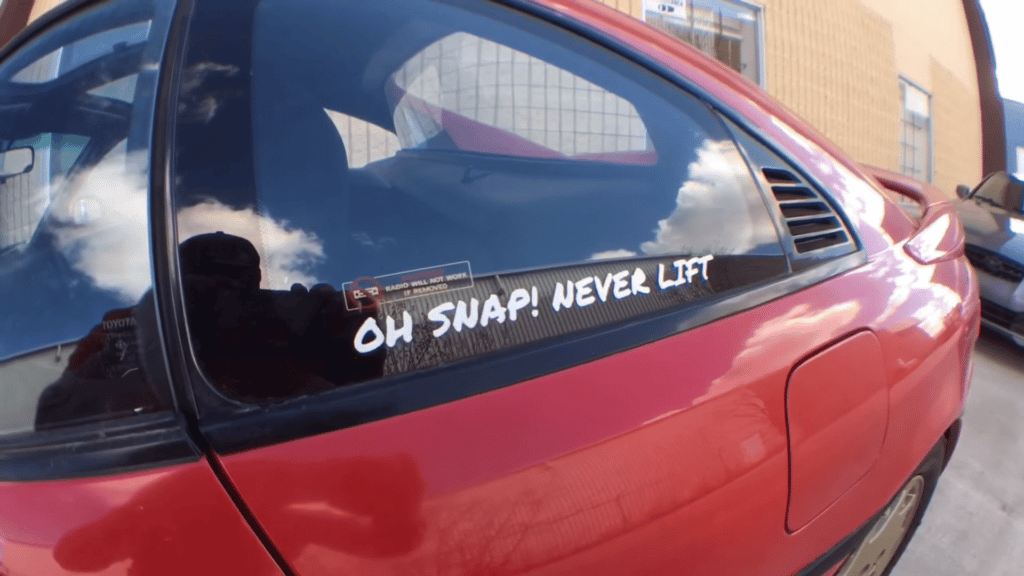
But little do your friends know that you’re good at research, and are about to receive some sweet, anti-snap oversteer advice.
What is snap oversteer anyway? It’s this scary thing your car does when you go into a corner too fast and completely lift-off the throttle while turning.
As you lift off the throttle, the weight of your car is suddenly thrown forward, making the rear end kick out, launching you into abrupt oversteer. This happens because the rear end gets really light and instantly loses traction.
This article will tell you all about what snap oversteer is, what causes it and how to control it.
Oversteer Explained
To fully understand what is snap oversteer, we recommend learning the basics of oversteer and understeer first.
Here’s what understeer feels like — you drive into a corner, turn the wheel, but the car fails to turn and keeps going straight instead. This happens because the front wheels lose grip due to excessive speed and braking.
This is most common in front-wheel-drive cars. However, it is more predictable and easier to correct than oversteer.
Oversteer is the exact opposite. It happens when for whatever reason, your rear wheels lose grip first in the corner. This makes your car rotate around its axis, sending it sideways.
For example, you drive down a corner, turn the wheel and the rear end kicks out, sliding sideways, sending you into a spin or straight off the track.
The top causes of oversteer include:
- Too much throttle
- Very stiff rear suspension setup
- Shifting into a lower than desired gear at high rpm
- Suddenly backing off the throttle (snap oversteer)
What Is Snap Oversteer?
Most front-engine, front-wheel-drive cars hardly ever experience anything other than understeer. Rear-wheel-drive cars, on the other hand, are prone to experiencing oversteer for different reasons depending on where the engine is located.
Snap oversteer occurs when you suddenly lift-off your throttle mid-corner. That’s why it’s also called “lift-off oversteer” or “trailing throttle oversteer”. When this happens, all the weight of your car suddenly gets thrown forward (think dive and squat).
This makes the rear end very light — a recipe for disaster when it comes to rear-wheel-drive cars. Less weight on the wheels with power = less traction. Add even the slightest bit of steering lock to this equation and the rear of your car will kick out, launching you into a tree.

Rotational Inertia & Snap Oversteer Explained
Snap oversteer is most common among mid-engined, rear-wheel-drive cars for a reason. These cars have a much lower rotational inertia than those with a front-mounted or a rear-mounted engine. This increases the chances of the rear end spinning out.
Understanding how rotational inertia works will make it easier to understand what causes snap oversteer. Here’s a simple example.
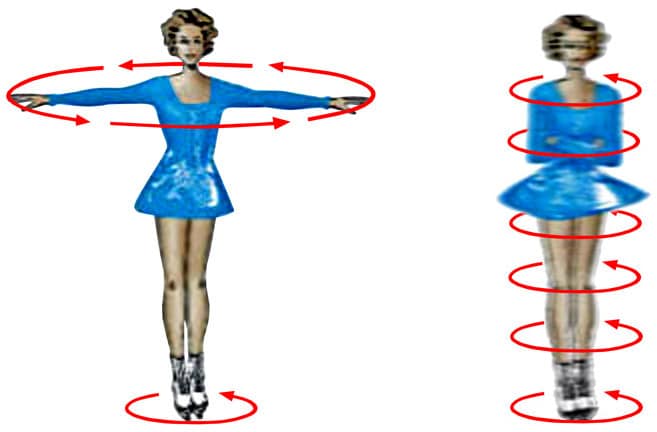
Think of a spinning figure skater in two scenarios:
- Spinning with their arms spread out
- Spinning with their arms folded in
As the skater starts out with arms spread out, they gain spinning momentum (like when you start turning). As their arms get closer towards the center (engine in the center), the rotational inertia becomes lower and they start spinning faster.
One of the oldest BMX tricks called the time machine spin is another great example of rotational inertia. Those who’ve successfully pulled this trick off will know!
Notice how the rider starts spinning crazy fast as they fold their leg in, closer towards the center. Something similar happens with mid-engined cars when they lose traction. They spin out uncontrollably and a lot faster than what front-mounted engine cars do.
Preventing Snap Oversteer
As the age-old saying goes, prevention is better than cure. Similarly, when it comes to controlling snap oversteer, it is important to understand prevention and correction as two separate methods.
Anyone who has unwillingly experienced snap oversteer will tell you how scary it is. However, it is not that difficult to control. You can easily prevent this by simply making a habit of never lifting off the throttle in a corner.
Here’s a quick look at some of the best ways to prevent any form of oversteer or understeer:
Preventing Oversteer:
- Reduce ride height at the rear
- Softening the rear suspension
- Adjust your camber angle for more negative camber and toe-in at the rear
- Using a stiffer front sway bar
- Add downforce
Preventing Understeer:
- Softening the front sway bars and spring rates
- Reducing front ride height
- Increasing front camber
- Wider front tires
- Wider front track
To specifically prevent snap oversteer or lift-off oversteer, consider the following steps.
Corner Entry Style
Whether or not you’ll experience any kind of oversteer or understeer depends on how you enter a corner. If you go in too fast or select the wrong line, the chances of things going wrong are high.
Another super important thing is careful gear selection. One gear too high and you’re going to want to downshift at the wrong time (which involves going off the throttle).
Go one gear too low and the chances of oversteer are almost certain because your engine will be revving higher in comparison to your speed. This will result in sudden engine braking and loss of traction.
If you’re on a track, do a few slow test laps to get a feel of what you’re getting into. We know this doesn’t sound fun but trust us, ramming into the side rails isn’t fun either. Incrementally increase your entry speed as you get more confident.
Other factors like surface traction, gravel, and weather also play a huge role and need to be considered. Especially if you’re on the street and not a track.
The number one thing to keep in mind if you want to avoid snap oversteer is to NOT lift your foot off the throttle mid-corner. It is always a good idea to release it gradually if needed. Being on the throttle helps keep the weight distribution in check.
Skill Check
Respect the road you’re on and the machine you’re in.
Mid-engined, RWD cars like the Toyota MR2 are notorious for giving beginners a false sense of confidence. It’s not that they are bad handling cars, don’t get us wrong. They handle supremely well; so well that they make beginner drivers overestimate their skills. Happens to the best of us.
Before you head out for a spin in one of these cars, give yourself a reality check. “Am I skilled enough to tame this beast?” If your answer is yes, by all means, go bonkers. If it’s a no, it’s okay to hold yourself back and take it easy. Self-awareness is a good thing.
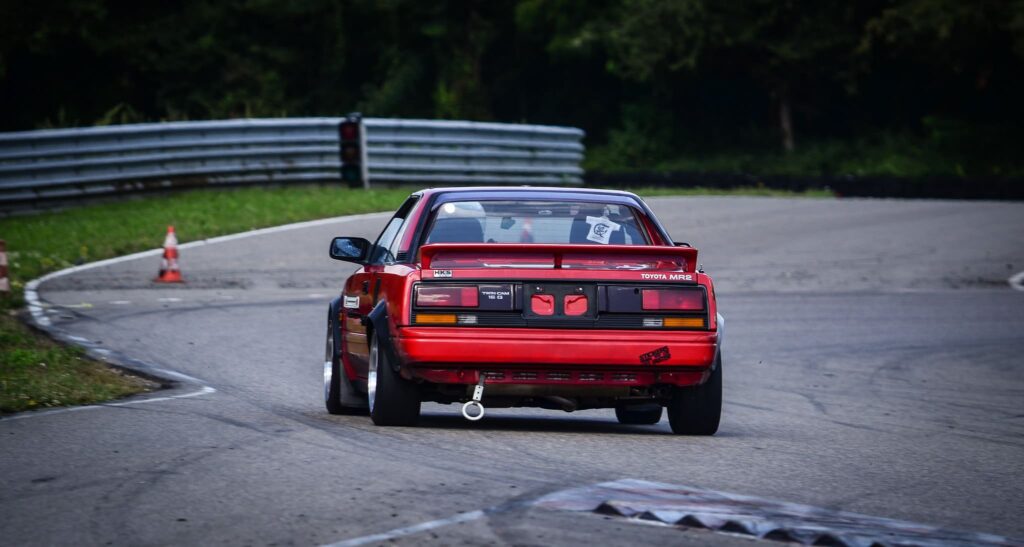
Condition of Your Car
We totally get the excitement of getting your hands on an exotic car that you’ve wanted for a long time. While it’s really tempting to just floor it the first time, we strongly recommend that you get it thoroughly inspected before doing anything crazy with it.
These cars can be very unforgiving towards inexperienced drivers — especially when they’re not in the best mechanical shape. Aggressively driving a mid-engined car with poor alignment and old tires is asking for a brown pants moment.
Get the following things checked and you’ll be safer out there:
- Well serviced suspension assembly
- Coilovers without ridiculous spring rates instead of lowering springs
- Tires
- Wheel alignment
- Brakes
Get to Know Your Car & Its Limits
The best way to prevent snap-oversteer is to purposely try and make it happen in a controlled environment. It helps to know exactly what your car does and when it does it.
Find a large, open parking lot when it’s empty and try to induce oversteer. Take a sharp turn and instantly let go of the throttle — only this time, pay close attention.
Right before your car starts losing traction, you’ll feel the “tipping point”. The moment you feel this is when you should start taking countermeasures.
If you get to know your machine and its triggers well, it’ll be easier for you to master it.
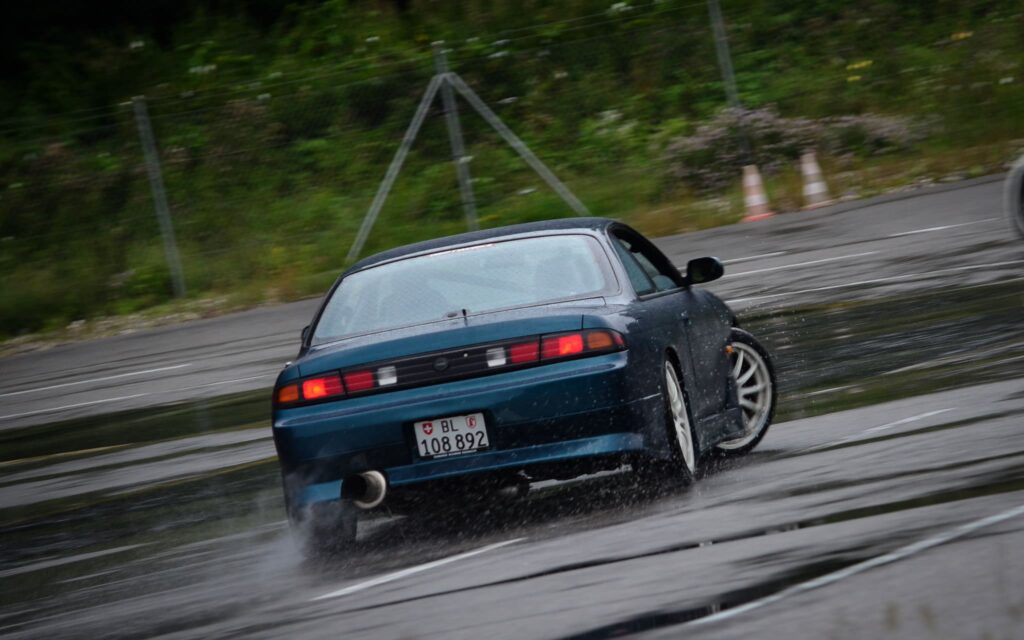
Any sufficiently experienced driver can prevent or control snap oversteer as long as their car has good tires and correct alignment.
Make sure that your steering, throttle, braking and gear change inputs are accurate to avoid lock-ups and unwanted changes of direction.
Correcting Snap Oversteer
Recovering from what could turn into a snap oversteer induced spin-out is easier than you think. You don’t need the reflexes of a ninja, nor do you have to be a pro-drifter.
If you’ve spent enough time behind the wheel and have some experience with counter steering, it’s going to come to you naturally.
As long as you can identify the moment right before you lose traction, you can take corrective measures to counteract it and keep driving straight.
Here are some things you must know to properly correct snap-oversteer.
Don’t Panic
Being able to stay calm is the single most important quality that separates good drivers from amateurs. It’s a human tendency to not be able to think properly and just freeze up in a state of panic.
If you don’t have enough seat time already, chances are that this might happen to you. Just remember to not forcefully hold the steering wheel in place if you encounter snap oversteer.
If you don’t countersteer or take corrective measures, you will spin out no matter what. Remember that your car is designed to balance itself. If you aren’t sure how to properly counter steer, simply let the steering wheel go and your car should steer itself back into a straight line.
Most cars are capable of doing this. However, we recommend that you test this in a parking lot at low speeds first before relying on it.
Gauge the Tipping Point
Snap oversteer doesn’t occur as suddenly as what most people will tell you. Depending on how well you know your car, you’ll feel the tipping point right before it starts losing traction.
Once you know how to identify it, it becomes easy to take corrective measures. This is where the idea of testing your car and getting to know where its limits are becomes important.
Once it’s past the tipping point though, there’s not much you can do about it.
What is Opposite Lock? Countersteer.
Countersteering is the ultimate method to either recover from or control oversteer. It involves turning your steering wheel in the direction opposite to where your car is headed.
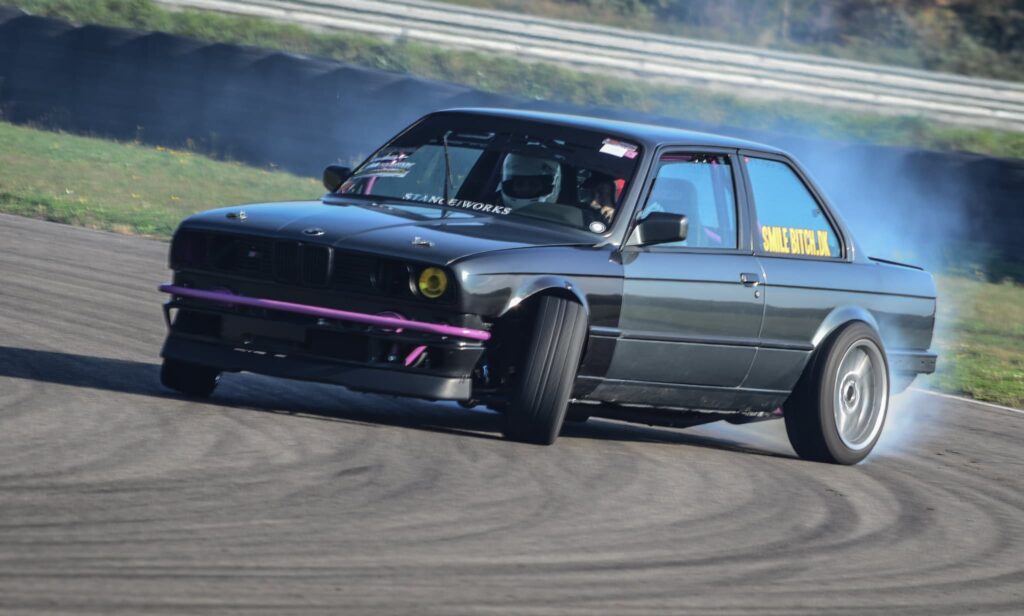
The best way to learn how to countersteer is to let it come to you naturally. If you’re thinking about it a lot, you’re probably going to get it wrong.
To tap into your natural tendency to countersteer, you must spend some time getting to know your car and how it behaves.
When it comes to recovering from lift-off oversteer, you’re going to want to countersteer twice; assuming that your goal is to continue driving straight.
Suppose you’re entering a right-hand corner and you completely go off the throttle.
The moment you feel the tipping point, start counter-steering left. The second your car stabilizes, return the steering angle back to the center. Doing this will neutralize your slip angle and weight transfer.
Snap oversteer isn’t a special case. Counter it like you would counter any oversteer. The later you react, the harder it is to keep the car going in the right direction.
The important thing is to react quickly, without overdoing it. If you over-correct your slip angle, it’s going to snap back even harder.
Try to listen to the feedback that your steering wheel provides. If you’ve had enough seat time, you’re going to know exactly how much pressure to use. Trust your muscle memory.
Get Back on the Throttle
The main culprit of snap oversteer is releasing the throttle completely. It only makes sense why getting back on the throttle will help to correct this. However, when you get back on the throttle and by how much is what really matters.
To settle down the rear end of your car, start applying throttle when you start countersteering. Doing this will bring back some of the much-needed stability and make things more intuitive.

How much throttle you should use depends on how much power, and torque your car has. If you’re driving something like a Miata, be generous with the throttle. But if you’re in a Viper or a Corvette, go easy.
The more you practice, the easier it gets. Eventually, these skills will become second nature.
Snap Oversteer While Drifting
Drifting is basically a well-controlled form of oversteer. By countersteering accurately and maintaining the perfect steering angle and throttle input, you can drift through every corner like a boss.
Many enthusiasts take advantage of snap oversteer by using it as a drift initiation technique. It’s not as easy as the tried and tested e-brake or clutch kick method but it works.
Drifting is also a good snap oversteer recovery method to prevent your car from spinning around. You can do this by counter steering once and reapplying the throttle instead of letting your car snap back the second time.
One thing we really love about drifting or any motorsport, in general, is that it makes you a much better and safer driver overall.
Having that level of control over your car really pays off in the long run. After all, the main goal is to always bring your car home in one piece.
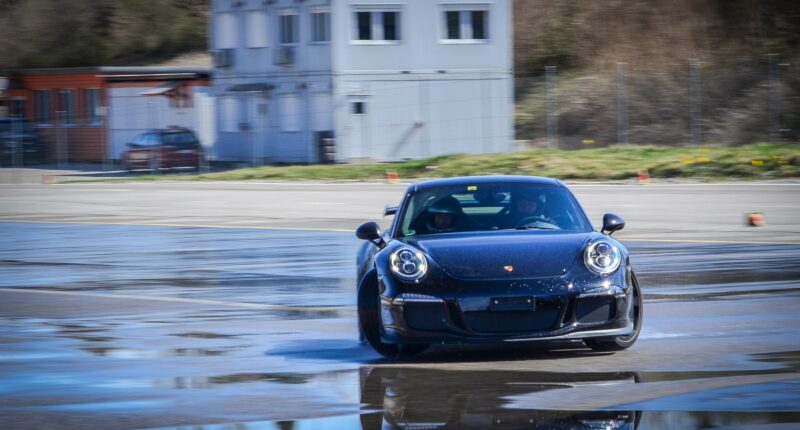

1 comment
I am very impressed with your article on snap oversteer. Even though I knew what it is and how to correct it, your presentation and suggestions on suspension effects on car sensitivity to throttle control was very helpful. Thanks for writing the article.